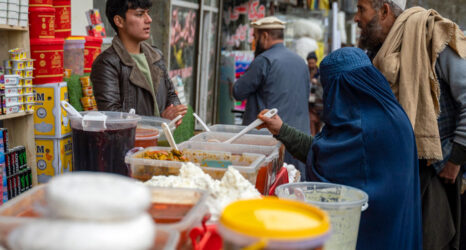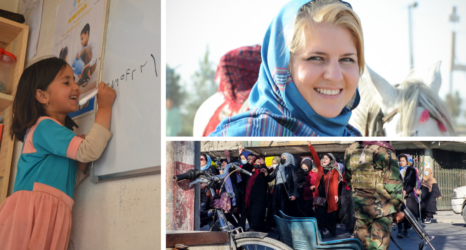It was certainly good news to hear in April that a 6-year-old Afghan girl, whose father previously intended to marry her to a 17-year-old boy, was no longer being forced to get married. The girl’s father received enough money from an anonymous donor to not have to sell his daughter to pay off a debt.
But despite one happy ending, child marriage remains a global nightmare.
A common occurrence in sub-Saharan Africa and parts of South Asia (PDF), child marriage is directly linked to poverty, as some parents sell their daughters into marriage in order to maintain enough money to get by. It’s estimated that nearly one out of nine girls in developing countries will get married by age 15. And recent studies have shown that, due to an increase in global crises and poverty, child marriages are on the rise.
Girls in many countries are married under the legal minimum age in their country. In Afghanistan for example, it is estimated that 16 percent of girls get married before age 15, while the legal minimum is 16. In some rural areas, up to 30 percent of families report having placed their daughters into marriage before 15. The majority of these families say they marry their daughters off for financial reasons.
The legal minimum age to get married varies from country to country—some countries have unclear laws, which allows prepubescent girls to get married. For example, while the legal minimum to get married in Iran is 16 for girls, another Iranian law states that a girl can enter into marriage once she hits puberty, if the parents consent. Because of this loosely worded and poorly enforced law, hundreds of families in Iran get away with marrying off even their prepubescent daughters each year.
In Niger, the country with the highest percent of girls married before 18, 12-year-old Takia reported to the United Nations Population fund (PDF) that she was married at 9 to a man who was around 50 years old—and at 11 gave birth. She told UNFPA,
One day my father told me I was to be married. I was never asked how I felt. It was my duty to respect his decision … I would have wanted to wait and find the one I love. But now it is too late. I prefer not to think about it. It is difficult for me, and for the whole country.
UNICEF is currently looking to increase awareness worldwide about child marriage and ensure legislation preventing child marriage is enforced. In a bit of good news, India passed the Child Marriage Prohibition Act in 2006, and as of late 2012 more than 5,000 villages in Senegal publicly declared their intentions to abandon the practice of child marriages. Unfortunately, unless major changes are made, it is predicted that worldwide there will be more than 100 million girls under 18 married in the next decade—that’s more than 38,000 girls getting married every day.
Click here to sign a petition to help end gender-based violence (including child marriages) and click here to donate to UNICEF.
*EDIT: Map information based on UNFPA data and should include the Central African Republic at 60.6 percent.





